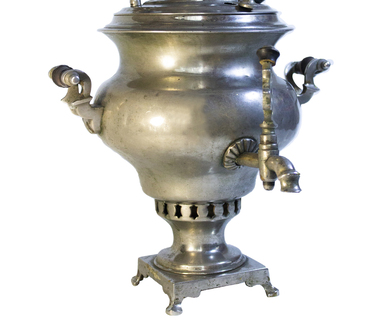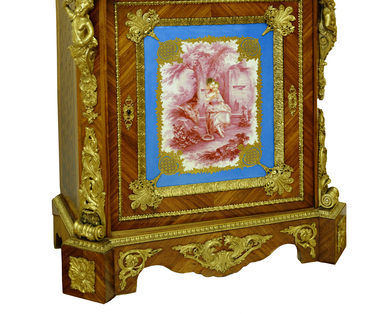The first wall clocks that were hung on the wall or mounted on brackets appeared in England in the 16th century. Historians suggest that their prototype was a tower clock.
The clocks for public places were larger than for home. Moreover, they had to have maximum accuracy, so the most expensive mechanisms were built into them.
The most unusual wall clock was a cuckoo clock. Their main feature was a completely wooden mechanism. Such clocks counted off every hour not with the usual beat, but with the sound “cuckoo”, which was made by two small corrugated tubes — bellows. The clock mechanism activated the bellows: it sent an airstream into each tube in its turn. The mechanism was set in motion by different weights, as in a standard wag-on-the-wall clock. Rare specimens were collected with a spring start.
The case of the cuckoo clock, as a rule, was a stylized wooden house with a gable roof. There was a small window with a door above the clock face. Every hour it opened, and a figure of a bird appeared from there.
The first mention of a cuckoo clock dates back to 1629, when Philipp Hainhofer, an aristocrat from Augsburg, Germany, presented a similar clock to August of Saxony, the Elector of Saxony. Nevertheless, the birthplace of the traditional cuckoo clock is considered to be the German land Schwarzwald. Local artisans made the first watches of this type in the period between 1740 and 1750. Unusual watches quickly became popular in this region.
The cuckoo clock housed at the Oryol Museum of Local History was given to the museum by a resident of the city in 1960. The clock is made in a wooden case in the form of a cabinet with a carved shaped top and a glazed door. The front panel with a clock face is made in the form of an arch on two half-columns. The clock is decorated with floral ornaments in the technique of relief wood carving. The round clock face with Roman numerals is covered with a glass lens. The hands are made of blued steel and decorated with a stylized cross.
The clocks for public places were larger than for home. Moreover, they had to have maximum accuracy, so the most expensive mechanisms were built into them.
The most unusual wall clock was a cuckoo clock. Their main feature was a completely wooden mechanism. Such clocks counted off every hour not with the usual beat, but with the sound “cuckoo”, which was made by two small corrugated tubes — bellows. The clock mechanism activated the bellows: it sent an airstream into each tube in its turn. The mechanism was set in motion by different weights, as in a standard wag-on-the-wall clock. Rare specimens were collected with a spring start.
The case of the cuckoo clock, as a rule, was a stylized wooden house with a gable roof. There was a small window with a door above the clock face. Every hour it opened, and a figure of a bird appeared from there.
The first mention of a cuckoo clock dates back to 1629, when Philipp Hainhofer, an aristocrat from Augsburg, Germany, presented a similar clock to August of Saxony, the Elector of Saxony. Nevertheless, the birthplace of the traditional cuckoo clock is considered to be the German land Schwarzwald. Local artisans made the first watches of this type in the period between 1740 and 1750. Unusual watches quickly became popular in this region.
The cuckoo clock housed at the Oryol Museum of Local History was given to the museum by a resident of the city in 1960. The clock is made in a wooden case in the form of a cabinet with a carved shaped top and a glazed door. The front panel with a clock face is made in the form of an arch on two half-columns. The clock is decorated with floral ornaments in the technique of relief wood carving. The round clock face with Roman numerals is covered with a glass lens. The hands are made of blued steel and decorated with a stylized cross.



